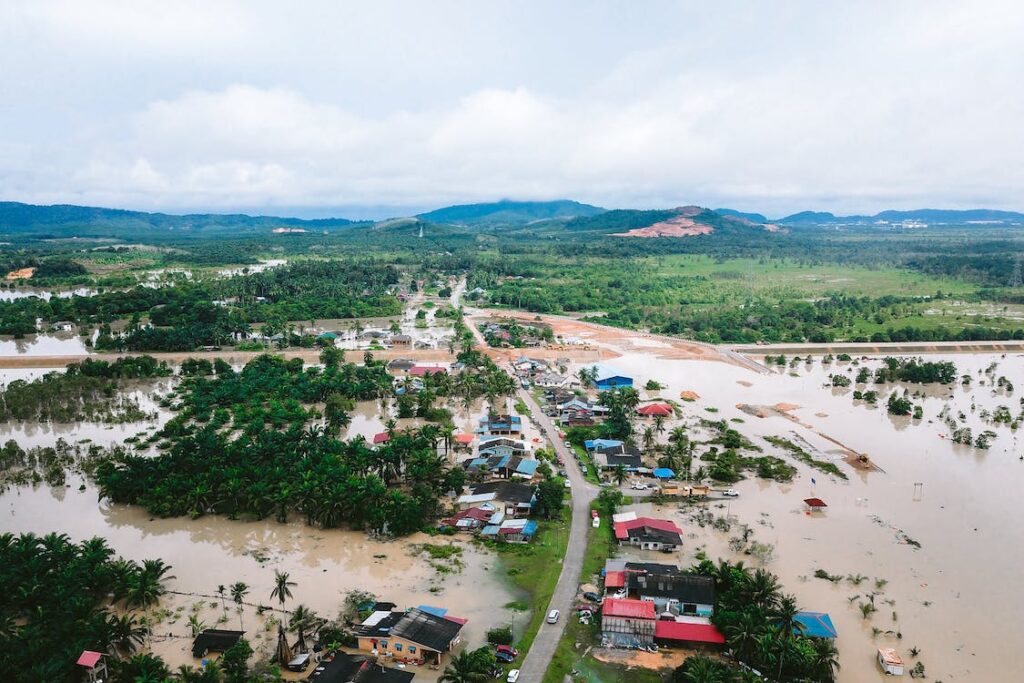Flood in Assam essay : Amidst the serene landscapes and rich cultural tapestry of India’s northeastern state, Assam, lies a recurring tragedy that has tested the resilience of its people for decades – the annual floods. Beyond the vibrant festivals and picturesque vistas, these floods bring a wave of devastation that leaves communities grappling with loss and displacement. In this essay, we embark on a journey to understand the multifaceted dimensions of the Assam floods, examining the underlying causes, the far-reaching consequences, and the valiant efforts to mitigate their impact. As we delve into the heart of this calamity, we shed light on the intricate interplay between nature’s forces and human determination, and how this juxtaposition shapes the narrative of a region’s struggle for survival.
So here is the detailed essay on Assam Floods:
Table of Contents
Flood in Assam essay
Introduction:
Assam, a northeastern state of India, is renowned for its breathtaking landscapes, rich biodiversity, and diverse cultures. However, it also faces a recurring natural challenge – annual floods. These floods are primarily caused by the overflow of the Brahmaputra River and its tributaries, affecting millions of lives and causing extensive damage to property, infrastructure, and the environment.
Causes of Flooding :
The Brahmaputra River, one of the largest rivers in the world, originates in Tibet and flows through Assam. During the monsoon season, heavy rainfall in the region and in the upstream areas of the river basin leads to a massive inflow of water. The combination of heavy rainfall, the river’s considerable width, and the inadequate drainage infrastructure in many areas results in overflowing riverbanks and widespread inundation. Additionally, the region’s hilly terrain exacerbates the problem as water rushes downhill, overwhelming settlements and agricultural fields.
Impact on People:
The annual floods in Assam have a profound impact on the lives of the people. Thousands are displaced from their homes, forced to seek refuge in temporary relief camps. These camps often lack basic amenities, leading to health issues and a general decline in the quality of life. Loss of livelihoods is another significant concern, as farmlands are submerged, livestock is lost, and transportation and communication networks are disrupted. Furthermore, the floodwaters contaminate drinking water sources, leading to the outbreak of waterborne diseases.

Environmental Consequences:
The floods not only affect human lives but also the rich biodiversity of the region. Assam is home to several endangered species like the one-horned rhinoceros, and their habitats are at risk due to the inundation caused by floods. The floodwaters erode soil and deposit sediment, which can alter the composition of the soil and impact agricultural productivity in the long term. Wetlands and forests also suffer from degradation, disrupting ecological balance and affecting the overall environment.
Response and Mitigation:
The Assam government, along with central agencies, undertakes various measures to mitigate the impact of annual floods. These include constructing embankments and flood control structures, improving drainage systems, and creating elevated roads to maintain connectivity during floods. Early warning systems are also deployed to alert communities about impending floods. However, challenges such as the scale of the problem, resource limitations, and the need for constant maintenance pose obstacles to effective mitigation.
Sustainable Solutions:
To address the issue of annual floods sustainably, a multi-faceted approach is required. This includes:
- Integrated River Management: Developing a comprehensive approach to managing rivers and their basins, which involves not only flood control but also considering ecological and social aspects.
- Improved Infrastructure: Building robust embankments and drainage systems, along with consistent maintenance, to ensure efficient water management during floods.
- Ecosystem Restoration: Preserving and restoring natural ecosystems like wetlands and floodplains that can act as buffers during floods and contribute to biodiversity conservation.
- Community Preparedness: Educating and training communities to be better prepared for floods, including developing evacuation plans, raising awareness about sanitation and health, and promoting sustainable livelihood options.
- Climate Change Adaptation: Recognizing the influence of climate change on the frequency and intensity of floods, and integrating climate adaptation strategies into flood management plans.
Conclusion : Flood in Assam Essay
The annual floods in Assam present a significant challenge that requires both immediate relief measures and long-term sustainable solutions. By combining government efforts, community involvement, and innovative strategies, it is possible to reduce the impact of these floods on both people’s lives and the environment. Through holistic and adaptive approaches, Assam can navigate its way towards a more resilient future in the face of this recurring natural disaster.
This is our “Flood in Assam essay” with 600 words. You can use this essay as reference to your study and write your own essay or you can just copy the essay.
I envy your piece of work, appreciate it for all the interesting posts.